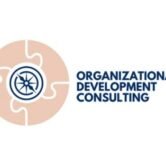Do you really have a culture of high performance?

Most companies will adamantly state that they have high expectations for performance. And that may be true – in terms of expectations. But do the systems for the enterprise and the leadership behaviors support this expectations? When groups of leaders are asked if they currently have someone performing at the minimum, generally everyone raises a hand. It’s not hard to change this – RAISE THE MINIMUM. It’s time to bridge the gap between high aspirations and tangible outcomes. Here are practical steps to elevate your organization’s performance from rhetoric to reality.
Here are two ways to turn high expectations into high performance:
Job Profiles
Look at your job descriptions. Do many of them end with “all other duties as assigned”? If they do, what does that communicate to an employee? Does it mean when the individual job is done, they should wait to be assigned additional work? This kind of communication came from a command and control approach that essentially required people to do what they are told to do. While this generates compliance, it is very distant from the committed employee who actively looks for ways to help the team and organization succeed. If there is a caveat at the end, shouldn’t it be “ works proactively to meet the team and company objectives”.
Instead of a list of tasks, look at what the job is responsible for achieving as an outcome. Instead of “manages the maintenance department”, use “inspires a team of committed maintenance professionals who proactively reduce downtime and contribute to increased productivity”.
High Performance Coaching
Once job descriptions are written, they are typically relegated to a binder or digital file. They are not usually referred to unless the employee is not performing to a specified task. However, if high performance is the objective, high performance job profiles are used to coach even higher levels of performance.
When the responsibilities and outcomes are defined in the highest terms, it gives leaders and employees a vision of what excellence looks like. With this as the vision, leaders can use the job profile to identify what they are doing well AND what they could and are cable of doing even better.
If there is a significant gap between current and expected performance, coaching can be used as well. In this instance, the gap is clarified and the conversation is largely about what the employee feels is the cause of the gap. If this is identified, it is expected that this employee, as an adult, will offer solutions. If the conversation does not go well, meaning that the employee does not accept accountability, is uncooperative, or even hostile, it’s an opportunity to challenge if this is a job he/she wants. If it is, a statement of commitment and plan of action is written by the employee. If it is not, it is understood that the employee is resigning. (Note: It is understood that leaders and HR must follow a policy of progressive discipline if it exists. Our advice is to get rid of that lengthy and mostly punitive policy.)
One last tip. Look at how your jobs are advertised. Instead of focusing solely on qualifications and duties, emphasize the opportunity for impact and growth. Paint a vivid picture of the role’s contribution to the team’s success and the organization’s mission. For example, a headline like ‘Do You Want to Leave Behind the Soul Murdering Grind of a Traditional HR Department?’ followed by more questions like Do your clients hesitate to move forward without tapping into your genius ideas? Do you get excited by the opportunity to drive a high performance culture? Are you excited about the opportunity to lead the best team you’ve ever seen? Are you tired of working in a different circus with the same clowns (we have different clowns)? If you said yes to the above, you belong here. That was the start of a job posting for one of our clients. It was followed by a description of a very different HR role and company.
Elevating performance isn’t just about setting high expectations; it’s about creating systems and behaviors that support those expectations. By refining job profiles, embracing high-performance coaching, and reimagining job advertisements, you can cultivate a culture where excellence thrives and aspirations become achievements.










